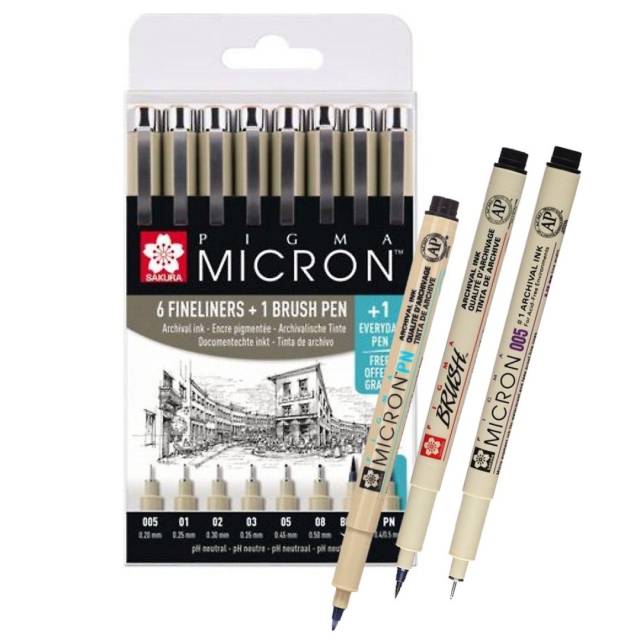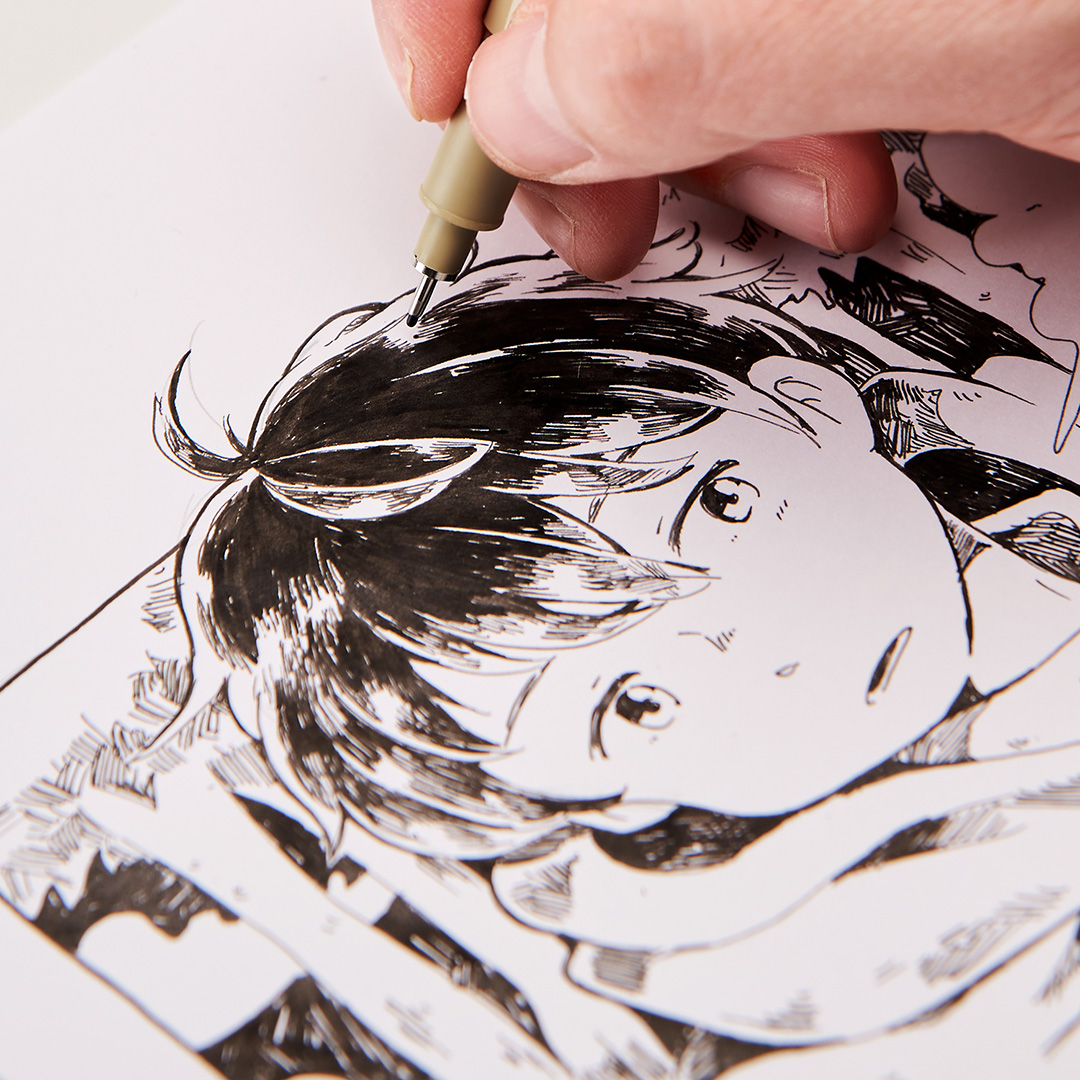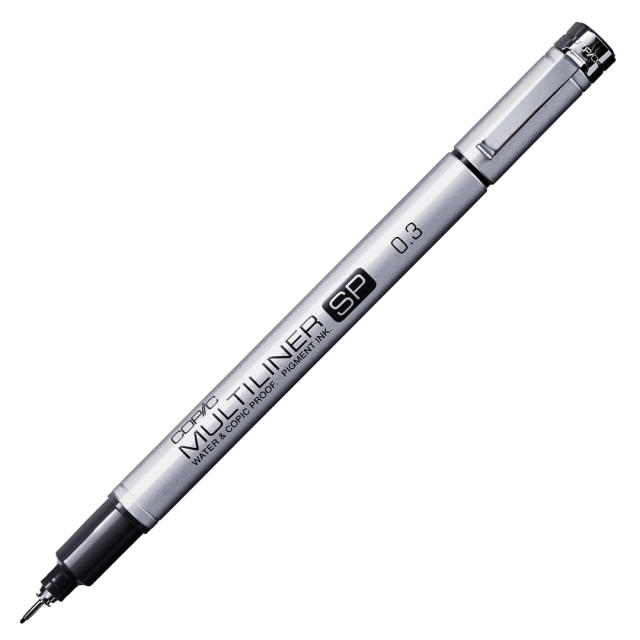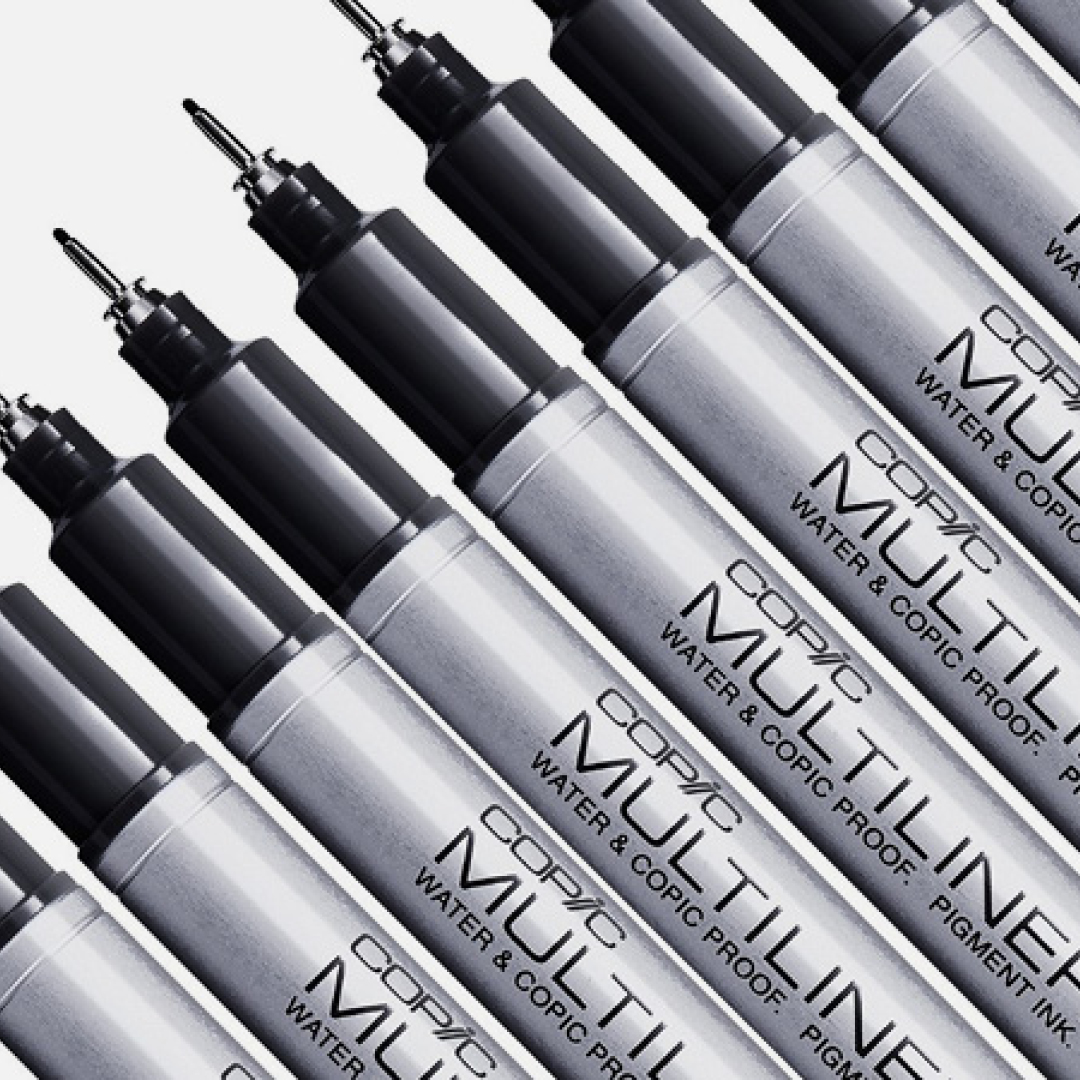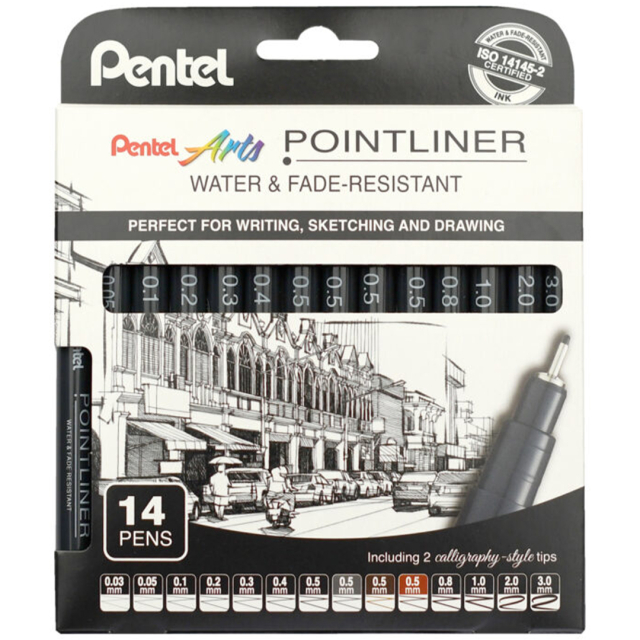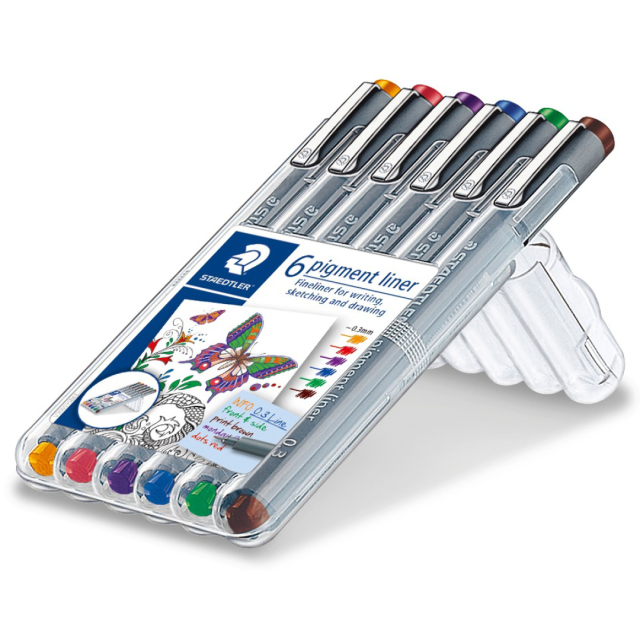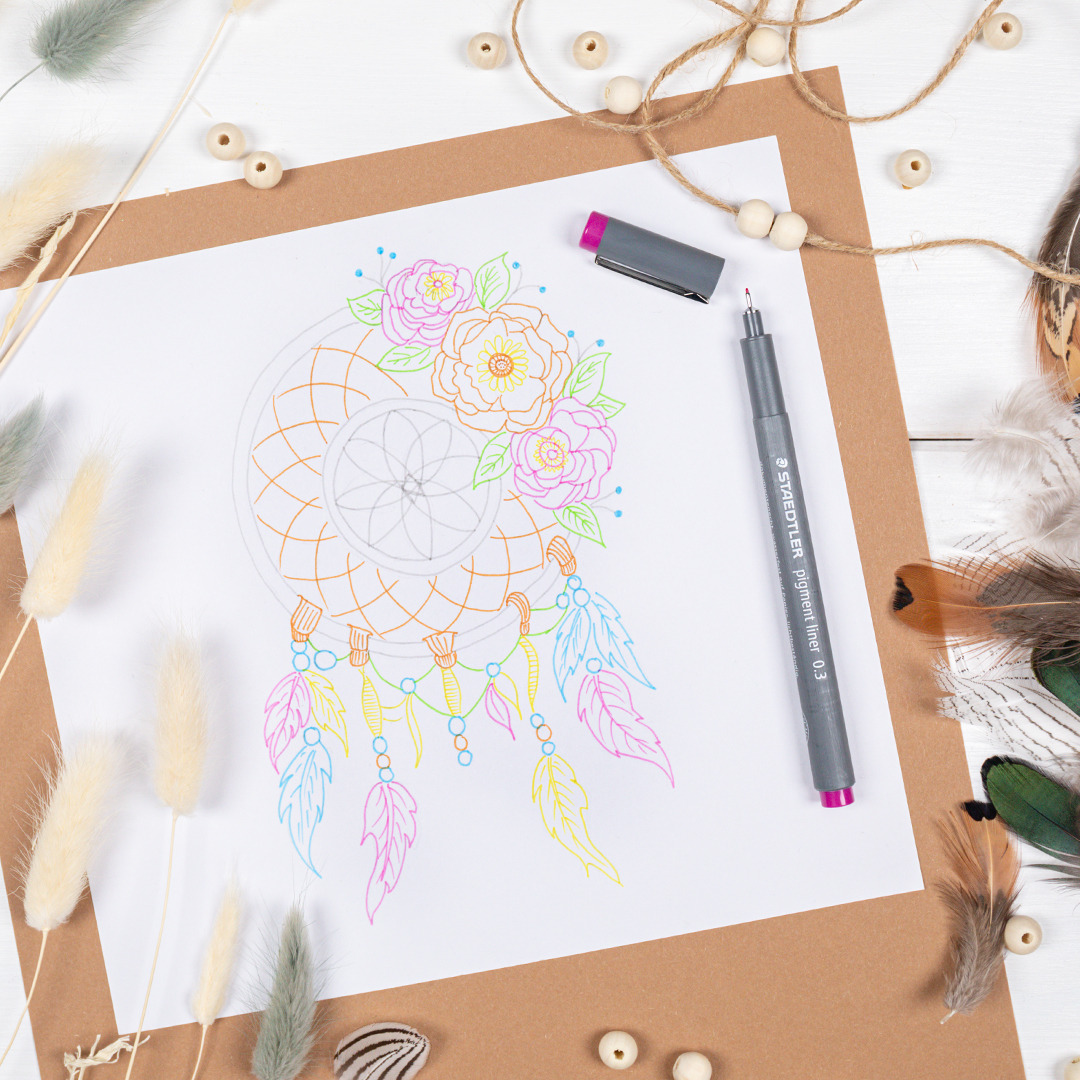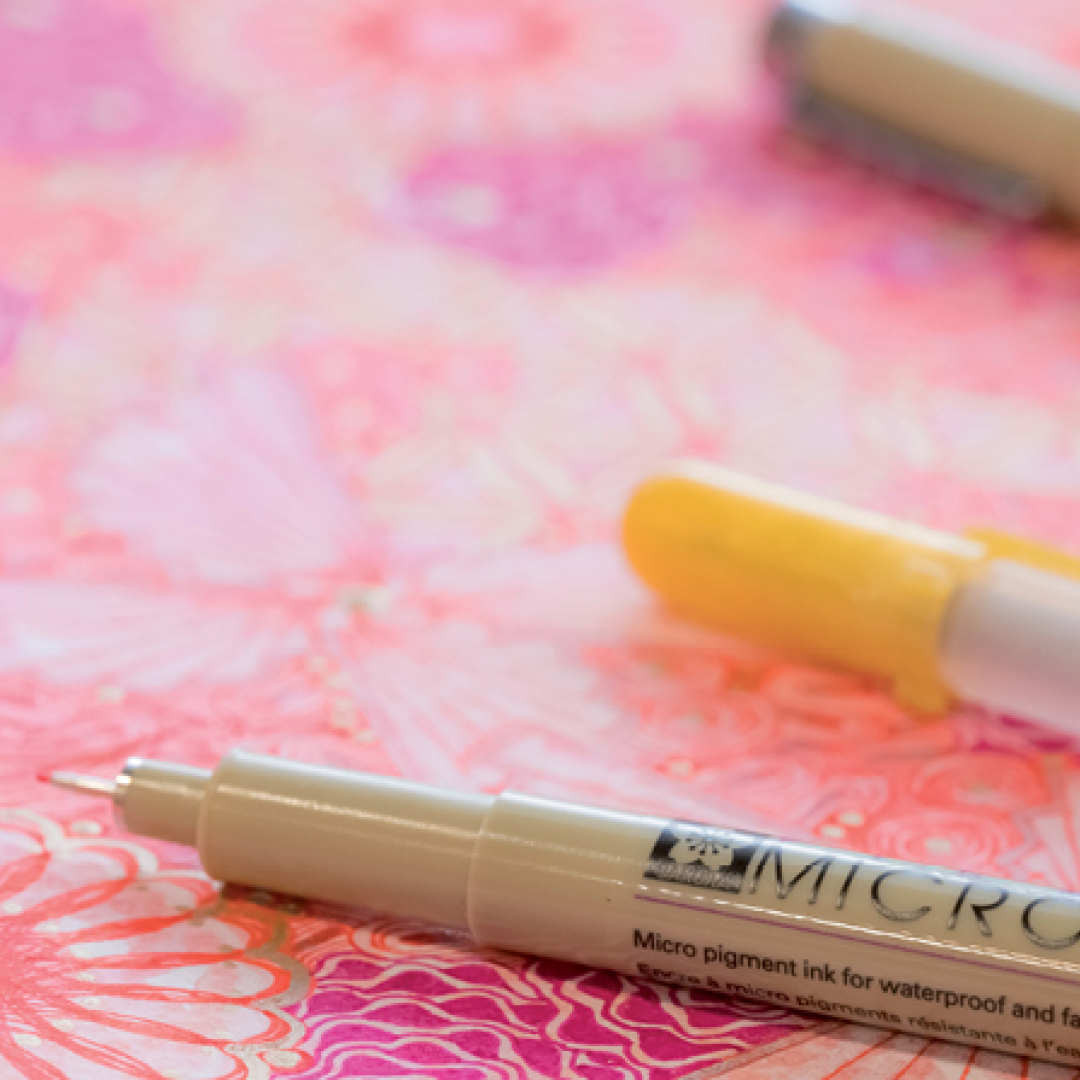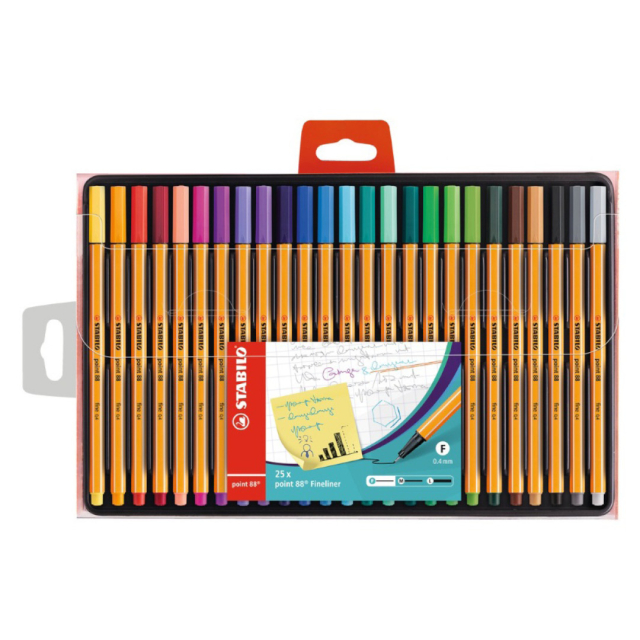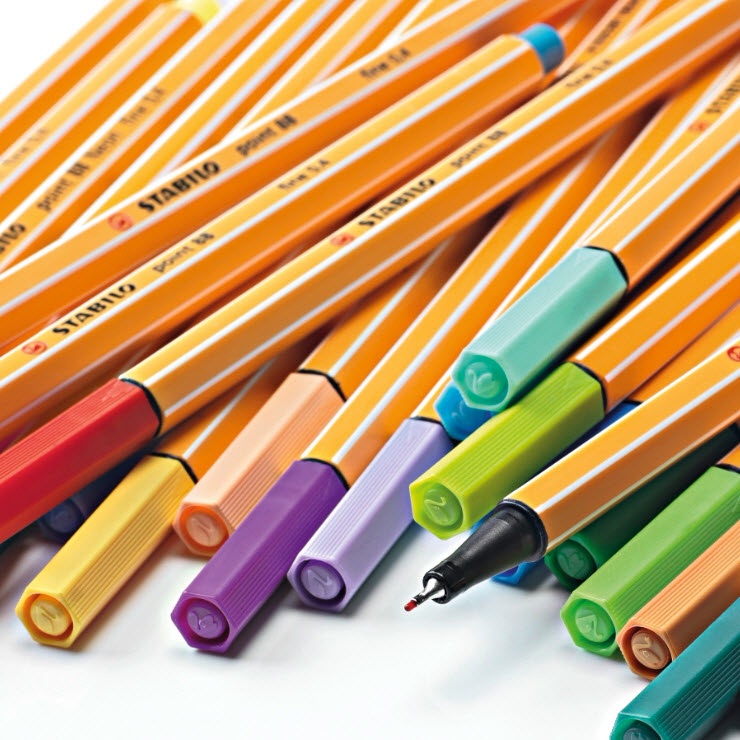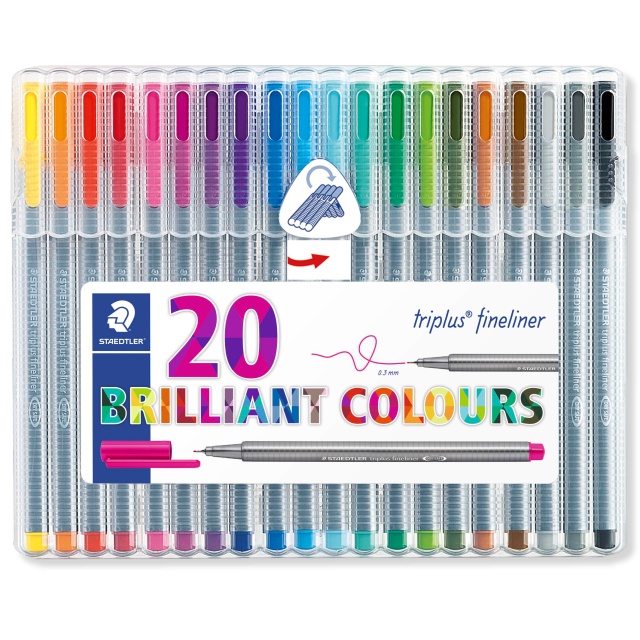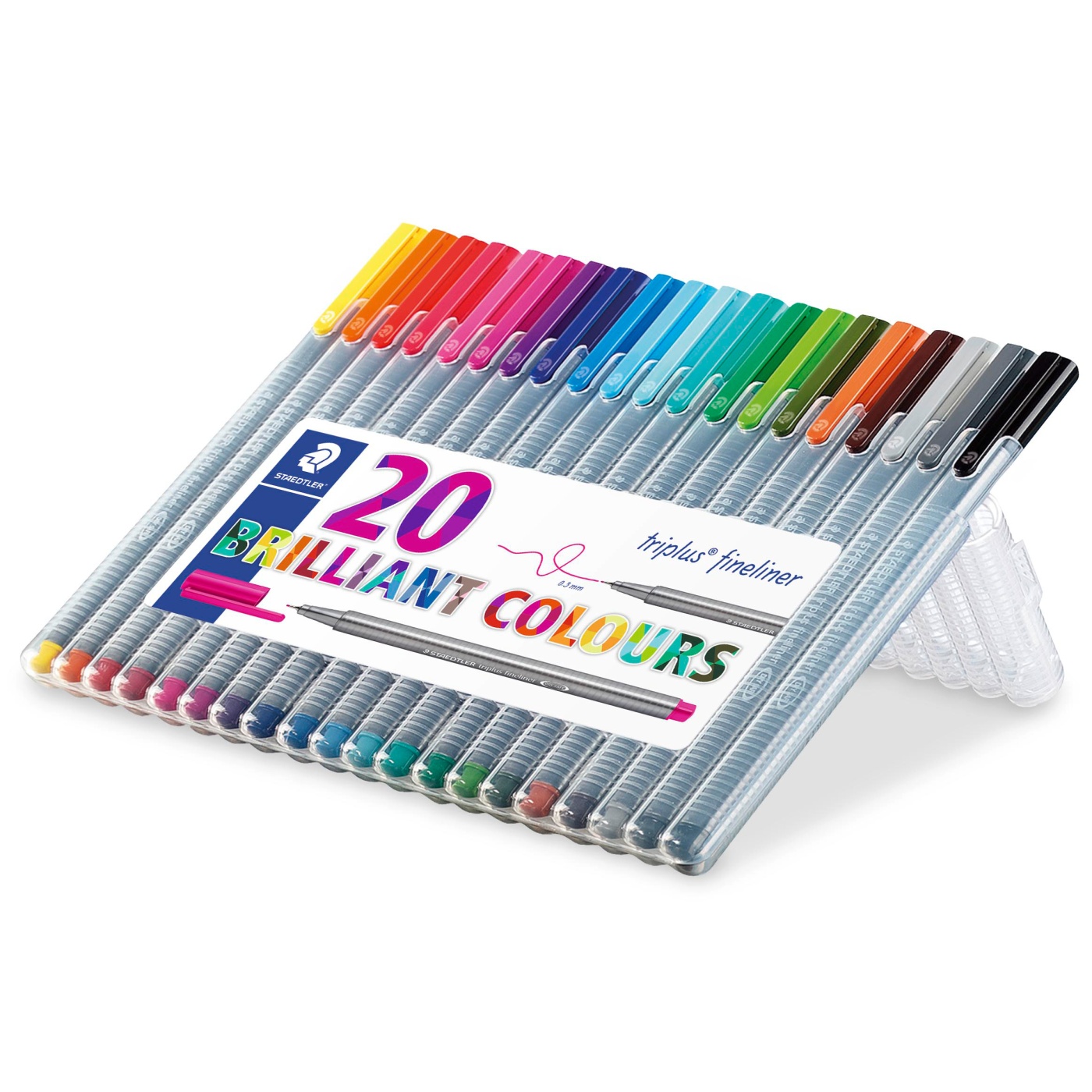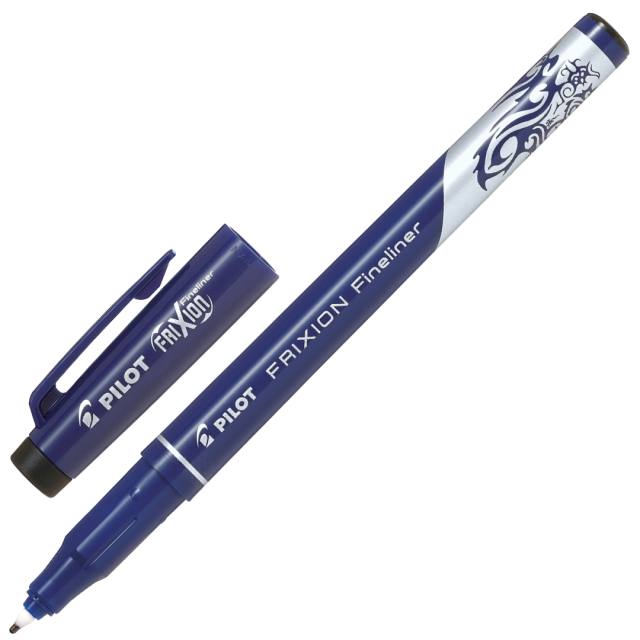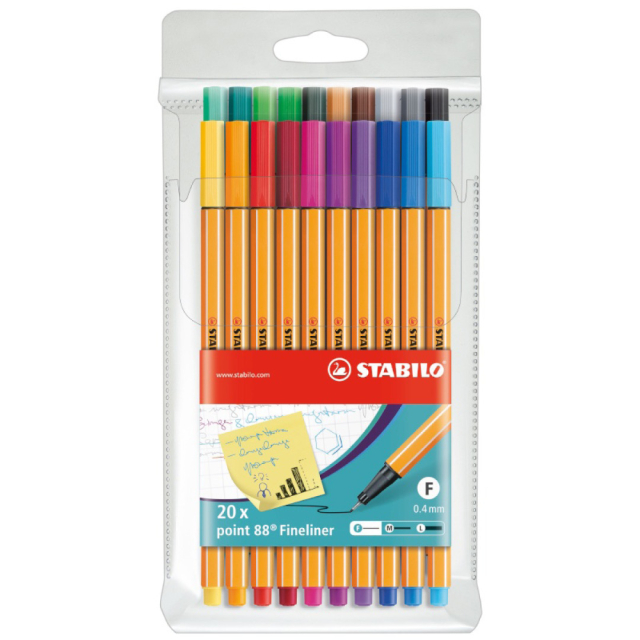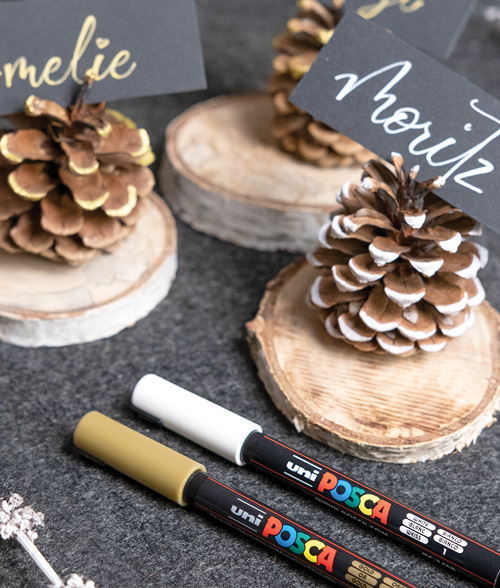Fineliners are a versatile tool for writing, drawing and sketching. In this guide, we go through the differences between various types of fineliners, everything about tip sizes, what paper you need, and what the pen can be used for. Whether you are an artist, a student or just like keeping things organised in your bullet journal, you’ll find everything you need to know about fineliners.
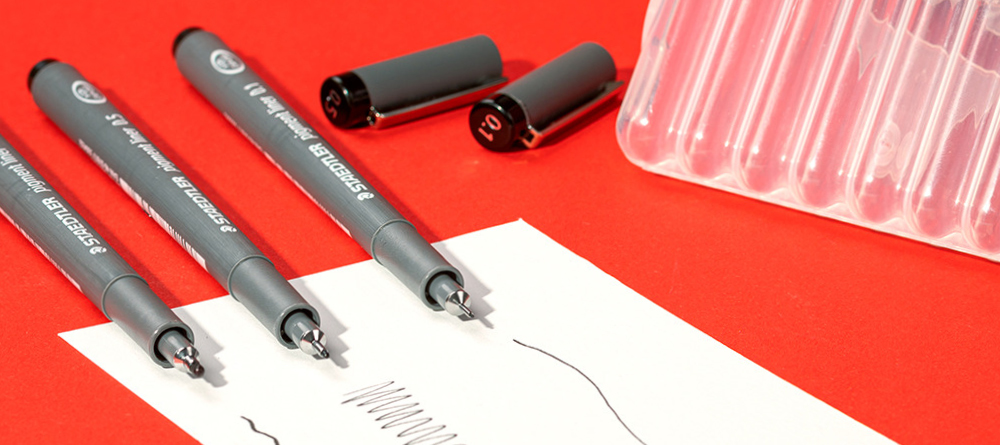
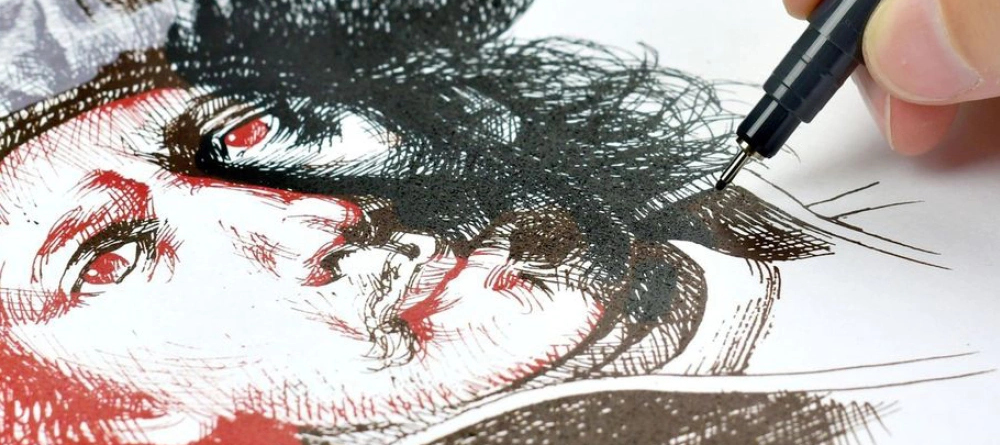
The difference between water-based and oil-based fineliners
In the product description, it often says that the fineliner is water-based. But what does that actually mean? Here we quickly explain the difference between water-based and non-water-based, that is, oil-based, fineliners.
Water-based fineliner
99% of all fineliners we sell are water-based, and there are both permanent and non-permanent types. Water-based does not mean waterproof, nor does it mean water-soluble, it simply means the ink contains water. Even waterproof, water-based fineliners need a few seconds to dry on the paper so the water evaporates and the ink becomes permanent.
Oil-based fineliner
Oil-based fineliners are rare, but they do exist. If you need to draw or write on smooth, tricky surfaces where water-based ink smudges and smears, an oil-based fineliner is a good alternative. Examples of oil-based fineliners include photo markers, labelling pens and extra permanent markers.

The difference between permanent and non-permanent fineliners
What makes a fineliner permanent, and how do I know if it is waterproof or will last over time? Let us explain how it really works.
Permanent fineliner
If you want to draw, illustrate or create something that lasts, a permanent fineliner is the right choice. In product descriptions, pigment ink and permanent ink are often used interchangeably, but they mean the same thing: when the ink has dried, you can paint or draw over the lines with markers, watercolour or other media without smudging. Pigment-based ink is also lightfast, which means the lines won’t fade over time. Black and grey permanent fineliners are the most common, but they are available in many other colours too.
Examples of permanent fineliners
Non-permanent fineliner
We’ve sung the praises of permanent fineliners, but non-permanent pens also have their time and place. Many hobby pens sold individually or in sets belong to this category. They are often available in many lovely colours and are usually in the lower price range. These are perfect for sketches, notes, colouring books, bullet journaling or crafts. Just remember that the lines won’t withstand wet techniques and may fade in sunlight.
Examples of non-permanent fineliners

Which fineliner should I choose?
It all depends on your purpose and how you intend to use the pen. If you write and doodle a lot, where many fineliners get used up, a cheaper non-permanent pen, perhaps even refillable for longer durability, might be enough. If you need a reliable fineliner for illustrations, are looking for a niche tip size or want to combine it with other media, it should be permanent and you should look at ranges designed for artists and architects. We’ve put together a complete buying guide with product tips for any technique or ambition level.
To the buying guide →

All about a fineliner's tip
The tip of a fineliner is narrow and very sensitive to both pressure and drying out. It is held in place and stabilised by a narrow steel tube a few millimetres long. It’s this steel tube that makes the fineliner especially suitable for use with rulers and templates, despite its fine tip.
About the tip material
The small part that sticks out from the tube can vary in softness and sensitivity depending on the brand. This is because of the material it’s made from, for example plastic, fibre or felt. It’s a matter of personal preference which type of tip you like best, so try different ones and change brand if you don’t like how it feels.
About tip widths
The tip width, also called the size, of a fineliner is usually given in millimetres. It gives an indication of how fine the line will be on paper, but depending on how hard you press or the angle of the pen, the line width can vary slightly. Fineliners come in all sizes, from tiny 0.03 mm to broad 1.2 mm. Artists, architects and crafters rarely stick to just one size. We recommend beginners start with a set containing a variety of sizes, that way, you’ll quickly find your favourites to buy individually later.
Handling the tip
It doesn’t take much for the tip to break or dry out. Here are a few quick tips:
- Store the pen horizontally to prevent it drying out.
- Always put the cap back on after use.
- Don’t press too hard when drawing or writing. If the soft tip gets pushed into the steel tube, it won’t come out again.
- Don’t let a careless colleague, or anyone who hasn’t read this guide, borrow your pen.


Popular uses for fineliners
The fineliner is perhaps the world’s most versatile pen, used in many different hobbies and professions. Here’s just a selection of what you can do with a fineliner!
Drawing and illustrating
It’s popular to combine a permanent fineliner with various types of illustration markers. You can, for example, highlight lines and outlines in a drawing or shade areas with crosshatching or lines. The fineliner can also work magic on its own, as in stippling, the art of creating complex images and shadows with small dots in varying densities.
Writing and note-taking
Fineliners offer a smooth, even ink flow that glides across the pages of a notebook. With different tip widths, it’s easy to create visual contrast, using a thicker tip for headings and a thinner one for bullet points. The water-based ink rarely bleeds through even the thinnest paper, making the fineliner a more creative alternative to fountain pens and rollerballs.
Sketching
A popular technique is to sketch a subject with a fineliner and then add colour with watercolours or various artist markers. The fineliner is a favourite tool for styles like urban sketching and fashion or interior design drawing.
Measuring and designing
Fineliners are an essential tool for those who require precision, like architects, engineers and product designers. The sturdy metal tube around the tip is especially suited for use with rulers and templates, making it easy to draw precise, straight lines without the tip bending or slipping. Perfect for technical drawings where every millimetre counts.
Bullet journaling and scrapbooking
You’re guaranteed to find at least one fineliner in the pencil case of anyone who does BuJo, scrapbooking or photo albums. It’s hard to beat the combination of precision, colour range and neat finish when it comes to organising, decorating and adding a personal touch to each page. With different tip widths, you can create clear headings, neat frames and detailed patterns.
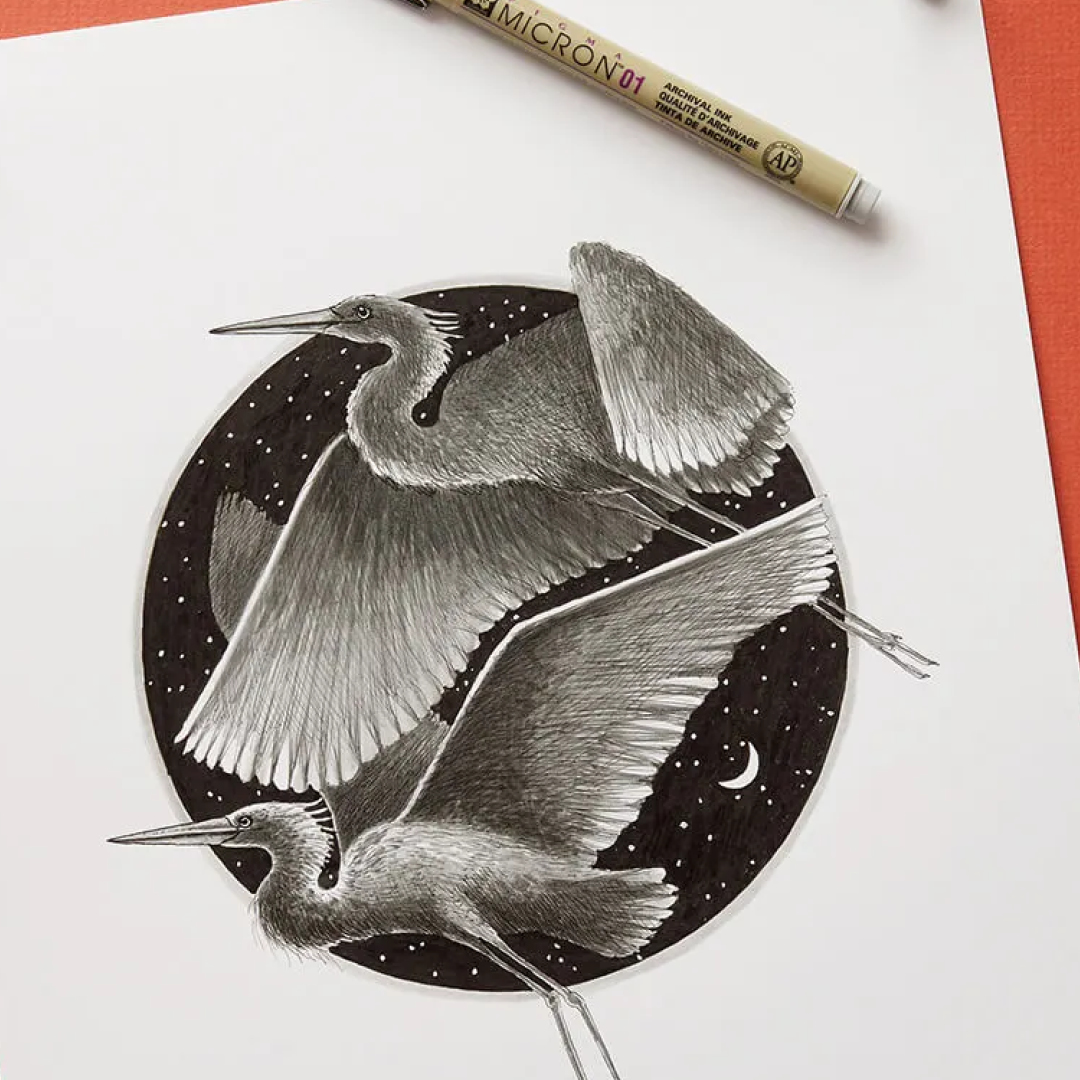
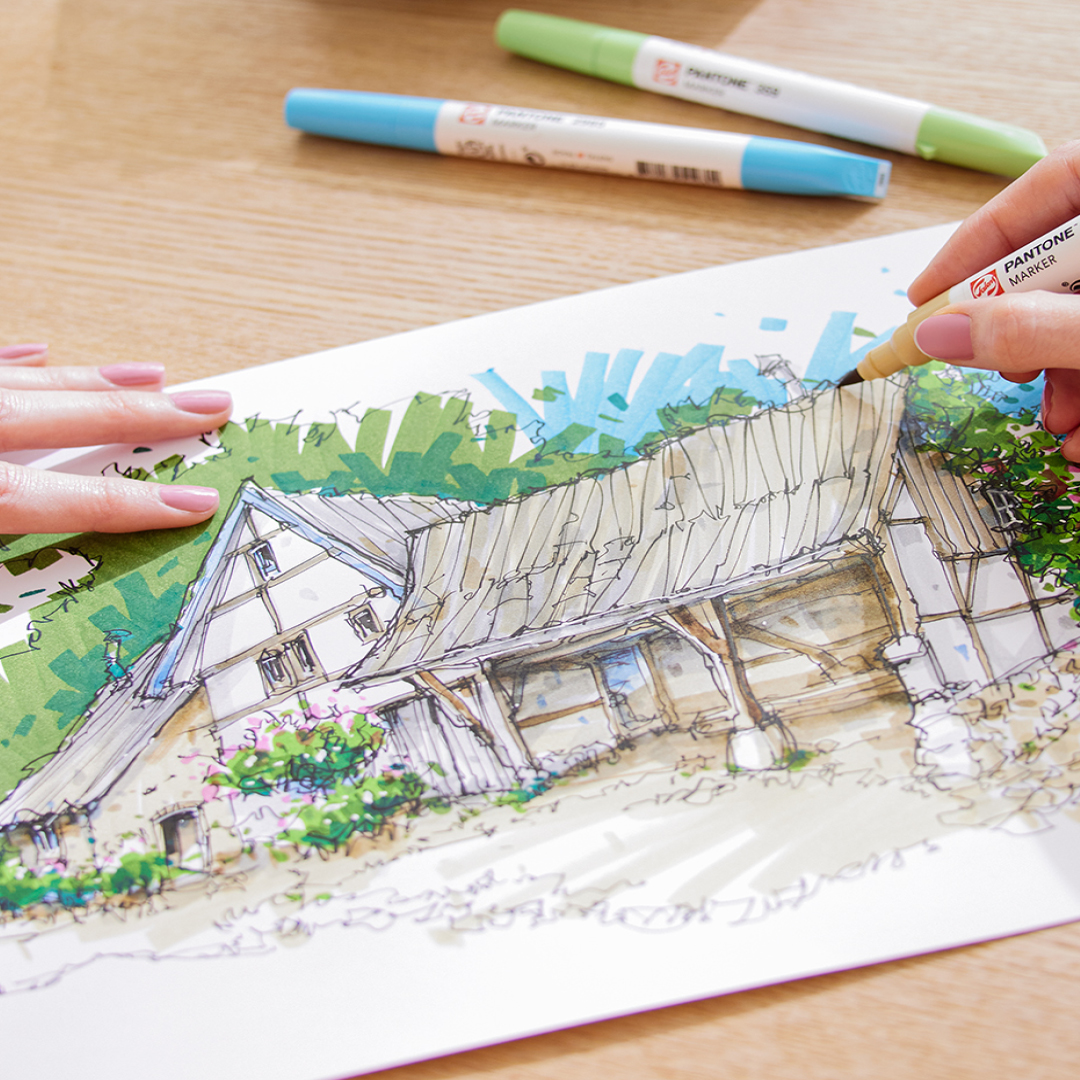

The best paper for fineliners
The fineliner is a real all-rounder, handling sketchbooks, watercolour paper and regular notepads without issue. What’s important is the medium you’re combining the fineliner with. Doing watercolour? Choose watercolour paper. Using markers? Go for bleedproof paper. Just after clean line drawings or notes? Almost any paper will do.
A quick heads-up: if you’re working on more textured surfaces, like rough watercolour paper or canvas, it’s smart to choose a fineliner with a tougher tip. Thin tips wear down more easily on coarse surfaces. Pentel Pointliner is an example of a fineliner with an extra durable tip.
All papers and pads →
 United Kingdom (GBP)
United Kingdom (GBP)
